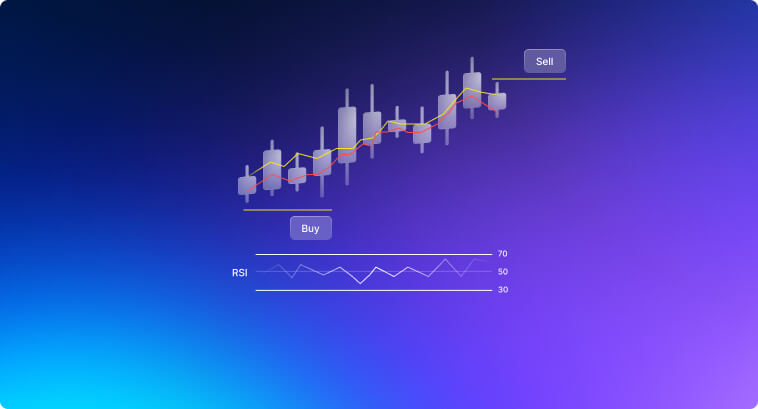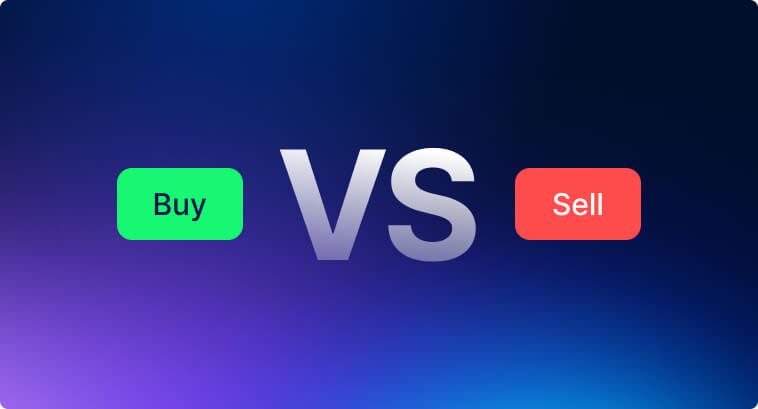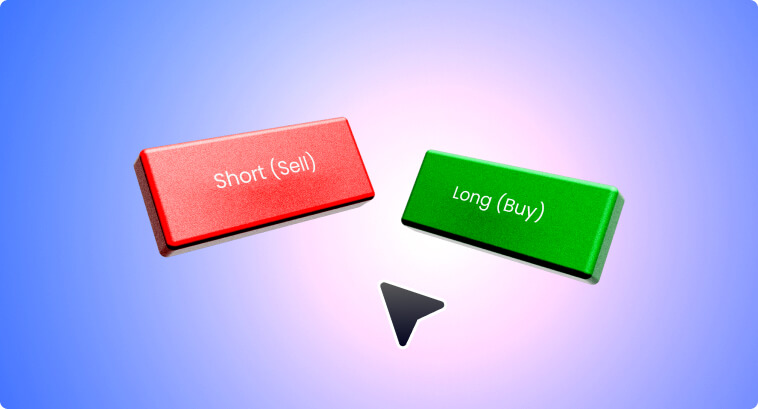Understanding Long Positions and Short Positions in Forex Trading


In the Forex market, traders can adopt different strategies based on their goals, timelines, and risk tolerance. Two major approaches we can discuss are short-term trading and long-term trading. Short-term trading, which includes techniques like scalping and day trading, focuses on quick buy-and-sell action, often within hours or minutes. In contrast, long-term traders aim to hold positions for weeks, months, or even years, basing decisions on macroeconomic trends, geopolitical analysis, and broader financial movements. The core difference lies in the duration for which positions are held and the type of analysis used—short-term traders rely heavily on technical analysis, while long-term traders often combine technical with fundamental analysis to open or close the position in the market. Each strategy comes with its own advantages and challenges. Different types of traders choose different types of strategies depending on financial objectives and psychological profiles.

Let’s consider that positions in Forex markets can be divided into short-term and long-term, each representing different strategies for profiting from price movements and market trends. A short-term position involves quick trades where the trader capitalizes on short-term fluctuations in a currency pair, often entering and exiting positions within minutes, hours, or a couple of days. A long-term position, on the other hand, is kept for weeks, months, or even years. The main difference between these approaches lies in their time horizon and the trader’s goals.
Short-term trading, particularly swing trading strategies, offers the potential for quick profits, but it comes with higher risks. One key advantage is the ability to capitalize on small price movements in a currency pair, which can accumulate substantial gains through multiple trades within a short time frame. However, this approach requires constant monitoring of price charts and market data, leading to high-stress levels.
Volatility, while creating more opportunities for short-term trades, also increases the risk of sudden losses. Imagine a trader sees an opportunity to short sell and goes short on a currency pair, just for a piece of breaking news to take the market in the opposite direction unexpectedly. Short-term traders also face significant transaction costs, as frequent buying and selling increases commissions and spreads, which can erode profits. The psychological burden is also high, as traders need to make quick decisions and stay focused for extended periods, which can lead to emotional burnout.
On the flip side, long-term trading involves holding long positions for extended periods, offering a more relaxed trading environment. One of its main advantages is lower stress, as traders don’t need to react to every single market fluctuation. Long-term traders can go long on a currency pair, waiting for a bullish price movement, and wait for broader economic trends to play out, potentially generating substantial profits without the need for constantly checking out the market. This style, however, requires significant capital, as traders must be able to endure potential losses over long periods and may need to maintain a higher margin with their broker to avoid margin calls. Patience and discipline are critical for long-term traders, as it can take months or even years for trades to pay off. The risk of holding a position during unexpected economic downturns and events can also be higher compared to short-term trading, where traders can quickly close positions to limit losses.

To determine whether a short-term or long-term trading approach is best for you, start by analyzing your trading goals, psychological profile, and experience level. Your goals play a key role in shaping your strategy. If you’re aiming for quick returns, a short-term trading style might suit you better, as it focuses on immediate price action and more frequent trades. On the other hand, if you’re looking to build long-term wealth, a longer horizon with fewer trades and less stress might be the ideal choice.
Next, evaluate how your psychological profile aligns with these trading horizons. If you’re comfortable with the stress of constantly monitoring the market and making quick decisions, short-term trading could be a good fit. In contrast, long-term trading is more suitable for individuals who prefer a more relaxed approach, focusing on larger trends and opening long or short positions over extended periods. In this context, going long means you expect the price to rise, while going short means you anticipate selling an asset now and buying it back at a lower price in the future. A long-term approach generally involves holding positions without needing to react to short-term volatility, making it less stressful for those who prefer stability to watch their positions grow.
Your level of experience is also relevant when deciding between these two strategies. Beginners often find long-term trading more manageable, as it gives them time to learn how the market works and understand essential tools like technical analysis and macroeconomic studies. Short-term trading requires a deeper understanding of price action and much more quick decision-making. Advanced traders might appreciate the fast-paced environment of short-term trades, entering and closing positions quickly, often multiple times a day, while balancing the higher risk involved in trying to profit from small price swings. Whether you’re trading stocks, forex pairs, or other assets, experience level influences how effectively you can manage risk and size your position.
Goals, risk tolerance, psychological profile, experience, and time commitment are the key factors behind the process of choosing whether short-term or long-term trading aligns best with your needs. The algorithm below has been designed to help you match your personal traits with your trading strategy and find an optimal approach for Forex trading.
1. Define Your Trading Goals
2. Assess Your Risk Tolerance
3. Evaluate Your Time Commitment
4. Determine Your Psychological Profile
5. Consider Your Experience Level
6. Review Financial Resources and Costs
We can summarize it as:
In short-term forex trading, decision-making revolves around technical analysis tools that help you identify entry and exit points within tight timeframes. Moving averages, such as the 50-day and 200-day MA, are popular for spotting trends, as shown in our guide to the best TradingView indicators for day trading, while the RSI is crucial for detecting overbought or oversold conditions, signaling whether traders should go long or go short. Bollinger Bands help measure market volatility, allowing short-term traders to identify price breakouts or reversals, ideal for those aiming to enter a short position during a price drop or open a long position when they expect a bounce back at a lower price. Candlestick patterns like Doji or Engulfing also provide valuable signals for short-term strategies by highlighting potential market reversals and relevant price action.
For those going long or going short multiple times within a single trading session, decision-making must be quick and precise. Scalping and day trading benefit from tools like the Stochastic Oscillator to measure momentum and confirm whether to open a short or long position, based on overbought or oversold levels. Support and resistance points also serve as guidelines for taking a long or short position based on how the market reacts at certain key price levels. And if you’re interested in how to get into scalping in Forex, Nick Levinsky‘s post, Scalping in Forex: Fast-Paced Trading – SabioTrade might be suited for you.
Long-term forex trading requires a broader view of market dynamics, with a bigger focus on fundamental analysis combined with technical analysis. Indicators like MACD help long-term traders identify long-lasting trends, aiding in decisions to go bullish on certain currency pairs when long-term upward momentum is confirmed. Fundamental analysis plays a larger role, as traders examine economic indicators, such as GDP growth rates, interest rates, and geopolitical events to decide whether to go long or short based on long-term market projections.
Fibonacci retracement levels are another useful tool for long-term strategies. Investors use these levels as potential points for support and resistance, which could signal a price reversal over a long period. Position trading—where traders hold long or short positions for weeks or even months—benefits from these tools, as they help them set the size and timing of their entry and exit positions. A meticulous analysis of global economic policies and interest rate changes is also important for anyone considering long-term positions and portfolio growth.
In short-term trading, capital and risk management are extremely important due to rapid market changes. Traders are advised to limit each position to 1% to 2% of their total capital and to use stop-loss orders to minimize losses if an unexpected event makes the market move against them, as sudden price spikes can lead to significant, even unlimited losses if not properly managed. Day traders and scalpers need a robust strategy for minimizing the impact of losing trades by setting clear entry and exit points.
Long-term traders approach risk differently, as they deal with fewer trades over extended timeframes. Position sizing becomes more critical, especially when implementing the best Forex trading strategies, with a focus on avoiding overexposure to any one asset or currency pair. Long-term strategies can withstand more volatility, and thus, stop-loss orders are typically set further from the current price to account for market fluctuations. Patience is key, as traders must ride out short-term market downturns if their long-term outlook remains favorable. Managing drawdowns is important in long-term trading, as unchecked losses can erode capital. Strategies like scaling into positions or diversifying trades can help mitigate this risk, protecting long-term investments over time
In both cases, risk management is an important factor. Avoid taking overly large risks by finding a good size of the position, whether buying or selling, and be mindful about going through drawdowns without getting desperate. You can definitely learn more on how to master drawdowns and bad moments while investing with the article Mastering Drawdown in Trading: Manage Drawdown in Forex Trading and more on our blog.